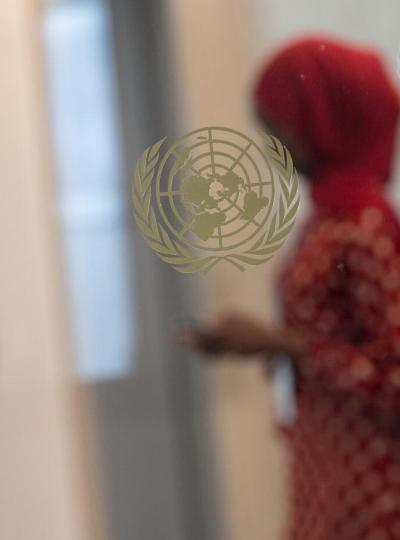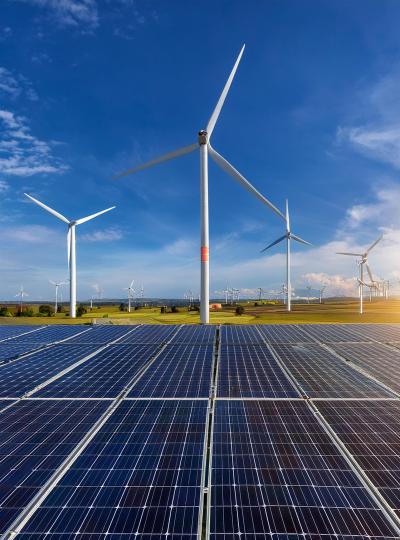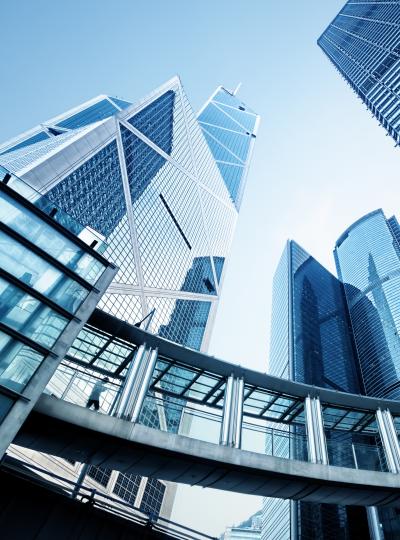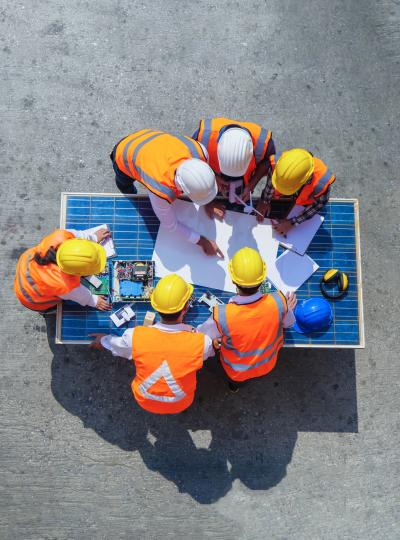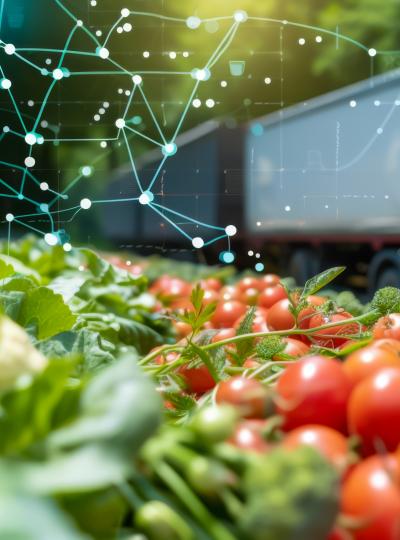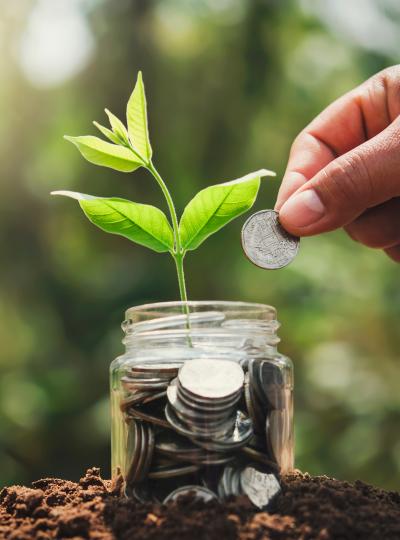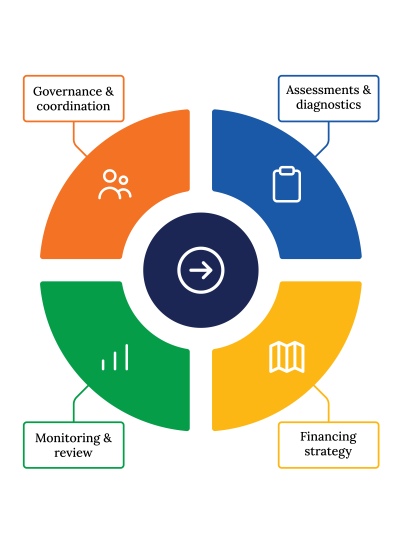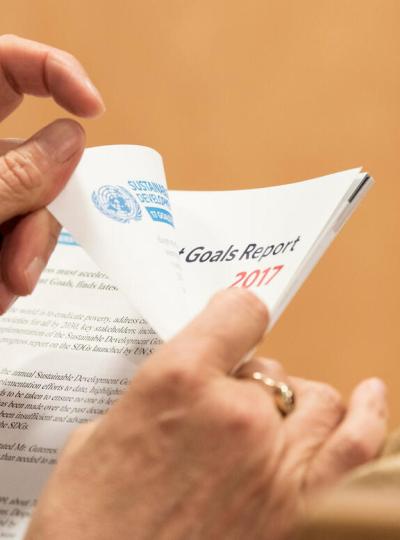Lagoon Transportation
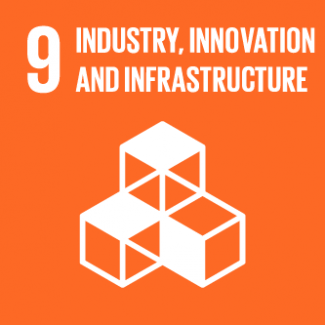
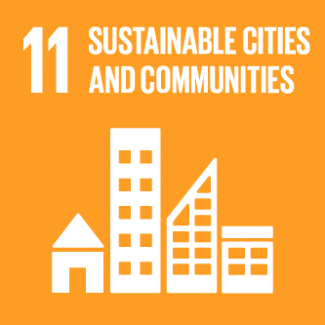
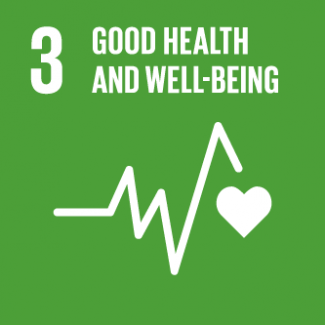
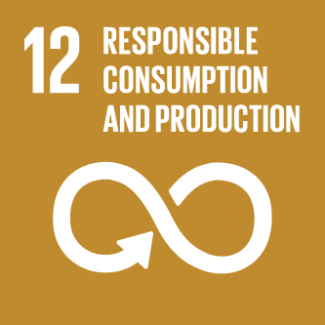
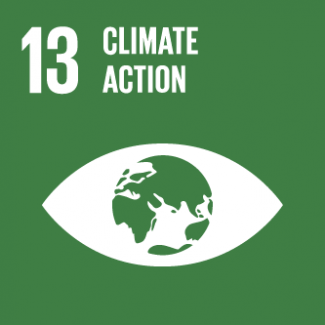
Business Model Description
Focusing on the Abidjan region, build, acquire, or use existing port terminals in the Ebrié lagoon, especially in Abatta, Bingerville, and Yopougon, to provide lagoon transportation services. Acquire boats, and offer individual as well as vehicle transport services to attract different income groups.
Expected Impact
Constitute a greener and affordable alternative compared to personal vehicles and minibuses, contributing to alleviate traffic congestion and the damage it causes in terms of life quality, also improving access to economic opportunities.
How is this information gathered?
Investment opportunities with potential to contribute to sustainable development are based on country-level SDG Investor Maps.
Disclaimer
UNDP, the Private Finance for the SDGs, and their affiliates (collectively “UNDP”) do not seek or solicit investment for programmes, projects, or opportunities described on this site (collectively “Programmes”) or any other Programmes, and nothing on this page should constitute a solicitation for investment. The actors listed on this site are not partners of UNDP, and their inclusion should not be construed as an endorsement or recommendation by UNDP for any relationship or investment.
The descriptions on this page are provided for informational purposes only. Only companies and enterprises that appear under the case study tab have been validated and vetted through UNDP programmes such as the Growth Stage Impact Ventures (GSIV), Business Call to Action (BCtA), or through other UN agencies. Even then, under no circumstances should their appearance on this website be construed as an endorsement for any relationship or investment. UNDP assumes no liability for investment losses directly or indirectly resulting from recommendations made, implied, or inferred by its research. Likewise, UNDP assumes no claim to investment gains directly or indirectly resulting from trading profits, investment management, or advisory fees obtained by following investment recommendations made, implied, or inferred by its research.
Investment involves risk, and all investments should be made with the supervision of a professional investment manager or advisor. The materials on the website are not an offer to sell or a solicitation of an offer to buy any investment, security, or commodity, nor shall any security be offered or sold to any person, in any jurisdiction in which such offer would be unlawful under the securities laws of such jurisdiction.
Country & Regions
- Côte d'Ivoire: District Autonome d'Abidjan
- Côte d'Ivoire: Bas-Sassandra
- Côte d'Ivoire: Comoé
Sector Classification
Transportation
Development need
The transport sector is responsible for 40% of the country's total CO2 emissions, which are expected to increase by 6% until 2030. Atmospheric pollution is responsible for 34,000 premature deaths a year in Côte d'Ivoire (1, 5, 11).
Policy priority
Côte d'Ivoire's Nationally Determined Contributions (NDCs) and its National SLCP Action Plan promote key strategies to reduce transport-related emissions, including the promotion of mass transport, fleet renewal, and the adoption of cleaner fuels. The National Development Plan aims to increase public investment to fund major infrastructure projects, including in the lagoons (3, 6, 5, 12, 13).
Gender inequalities and marginalization issues
In Côte d'Ivoire, transport infrastructures are unevenly distributed as 30% of the population, spread over almost 50% of the country's total surface area, is not directly connected to the paved road network. The public transport network is concentrated in Abidjan and remains inadequate, leading to extensive use of informal means of transport. The sector employs less women, they represent only 8% of Société des Transports Abidjanais' (SOTRA) workforce (2, 4, 18).
Investment opportunities introduction
Transportations is among the most important sectors in Côte d'Ivoire, weighing 7% of GDP. The Abidjan region accounts for 60% of the country's GDP and is experiencing rapid economic and demographic growth, resulting in a sharp increase in demand for mobility (16).
Key bottlenecks introduction
Rapid urbanization, alongside informality, may pose challenges in terms of planning and market access. The swift growth of urban areas, particularly in Abidjan, has outpaced the development of adequate transport infrastructure and services. For instance, the Abidjan metro has been delayed due to environmental and social compliance. This has led to increased congestion, pollution, and inefficiencies that may deter investment (1, 17).
Marine Transportation
Development need
The city of Abidjan accounts for over 70% of Ivorian vehicles, and the population is heavily dependent on individual vehicles, minibuses (Gbâkas) and shared taxis (wôrô-wôrôs), which emit high levels of CO2 and contribute to accidents' average annual growth of 4%. There are pressing needs for alternative modes of transportation, especially lagoon, which is crucial to curb traffic jams. Those are a major source of emissions and impact welfare and access to jobs (1, 5, 8, 11, 12).
Policy priority
Ministry of Transportation's "Feuille de Route de la Mobilité Durable en Côte d'Ivoire 2020" sets out the objectives for low-carbon mobility. It includes increasing the use of lagoon transportation for both passengers and for goods. The National Logistic Plan aims to develop lagoon and river freight transportation to improve supply chains efficiency (4, 10, 12).
Gender inequalities and marginalization issues
In Abidjan, the poorest households spend an average 20-30% of their income on transport, as well as 200 minutes commuting or waiting for public transport. Children are particularly vulnerable to air pollution in Abidjan with high prevalence rates of asthma (7, 12, 14).
Investment opportunities introduction
In Abidjan, approximately 40% of the 13.6 million daily journeys are made on foot, and only 2% via lagoon transport, indicating significant growth potential. In 2020, the three lagoon operators carried 109,000 passengers daily against an estimated demand of 225,000 passengers (1, 2, 12, 15).
Key bottlenecks introduction
Upfront investments in marine transportation are significant, entailing docks, terminals, and access roads. In addition, ongoing maintenance of vessels and infrastructure in a saline water environment can be costly (9).
Marine Transportation
Pipeline Opportunity
Lagoon Transportation
Focusing on the Abidjan region, build, acquire, or use existing port terminals in the Ebrié lagoon, especially in Abatta, Bingerville, and Yopougon, to provide lagoon transportation services. Acquire boats, and offer individual as well as vehicle transport services to attract different income groups.
Business Case
Market Size and Environment
USD 100 million - USD 1 billion
Since the liberalization of the sector, the number of passengers using the lagoon transportation services increased from 8.4 million in 2017 to 17.7 million in 2023. The prospects for further expansion of terminals and boats vouch for a market size of more than USD 380 million (24).
Indicative Return
10% - 15%
Based on a financial feasibility study of ferry services with the viability gap funding, in East Africa, investments would generate an IRR of 13% over a period of nine years (38).
Investment Timeframe
Medium Term (5–10 years)
Based on a financial feasibility study of ferry services with the viability gap funding, in East Africa, investments would generate an IRR of 13% over a period of nine years (38).
Ticket Size
> USD 10 million
Market Risks & Scale Obstacles
Market - Highly Regulated
Market - High Level of Competition
Business - Business Model Unproven
Capital - CapEx Intensive
Impact Case
Sustainable Development Need
The World Bank estimates that traffic jams cost the Ivorian economy 5% of GDP in 2017. Time spent in traffic jams has a negative effect on productivity and access to economic opportunities (26).
In Abidjan, households spend on average three hours per day in transportation, a direct consequence of traffic jams. Some traffic axes are overexposed, particularly the bridges linking the communes separated by lagoons due to and corridors linking the communes, with dense commuting fluxes between residential areas and employment areas, located across the lagoon. This negatively impacts life quality (26, 36, 41).
Between 2013 and 2018, the number of accidents on the Ivorian road network rose by an average of 3.87% per year. Accidents are concentrated in Abidjan, and over half are caused by individual cars, followed by minibuses (gbâkas) (1, 42).
Gender & Marginalisation
The concentration of greenhouse gases in Abidjan is largely superior to the standards of the World Health Organization, and poses peculiar threats to the women and the elderly, which are more vulnerable to pollution. This problem is exacerbated by traffic jams (28).
Traffic congestion and extended commuting times lead to increased fuel expenses, placing an additional financial burden on low-income households (41).
Expected Development Outcome
Lagoon transportation can help reduce the economic toll of traffic jams by carrying dozens of people at once. As traffic is particularly heavy at bridges and between neighbourhoods separated by lagoons, this is a crucial solution to traffic jams (22, 36).
Lagoon transportation can prove much faster than personal vehicles as they are exempt from jams and slow-downs related to roadworks. A user reported taking 30 minutes by boat for a journey that would take one to two hours by road (22).
Increased traffic on the lagoon reduces road accidents, as it is a safer means of transport compared to cars and minibuses, and it reduces congestion on the road (22).
Gender & Marginalisation
Lagoon transportation constitutes a solution against pollution as they release much less energy per capita. Carbon dioxide emissions per unit from river transport are two to four times lower than those from road transport (37).
Lagoon transportation can help reduce congestion, thereby lowering fuel expenses. It can also decrease commuting times by providing shortcuts compared to land transportation, especially in areas where bridges are distant or heavily congested (22).
Primary SDGs addressed

9.1.2 Passenger and freight volumes, by mode of transport
In 2023, the number of daily passengers through lagoon transportation was 48,500 (24).
The government aims to reach 500,000 daily passengers through lagoon transportation (39).

11.2.1 Proportion of population that has convenient access to public transport, by sex, age and persons with disabilities
In Côte d'Ivoire, the proportion of the population with convenient access to public transport in cities was 49.56% in 2020 (31, 44).
The long-term objective for this indicator is a value of 100% (31).
Secondary SDGs addressed



Directly impacted stakeholders
People
Gender inequality and/or marginalization
Planet
Corporates
Public sector
Indirectly impacted stakeholders
People
Gender inequality and/or marginalization
Planet
Corporates
Outcome Risks
Lagoon transportation may cause negative externalities such as water pollution or waste disposal. Without proper environmental management, it could exacerbate pollution in the already fragile lagoon ecosystem.
Without proper oversight, there is a risk that the infrastructures and the boats are not maintained adequately, constituting a potential source of accidents (48).
There is a risk that a significant increase in lagoon transportation further fragilizes ecosystems in the Ebrié lagoon, which are already vulnerable due to pollution, industry-related contamination, and pesticides (47).
Impact Risks
Compared to other means of transportation, lagoon transportation may be more exposed to external risks such as extreme weather events (e.g., flooding, storms) as well as erosion, which are increasingly common due to climate change. This could affect the construction and operation of infrastructures (45, 46).
There is a drop-off risk that the positive effects of the lagoon transportation system, such as reduced traffic congestion and lower emissions, may be limited if the service proves more costly than alternative means of transportation, such as buses and minibuses.
Gender inequality and/or marginalization risk: If companies enforce tariffication strategies to attract higher-end customers, benefits may be limited to wealthier segments of the population.
Gender inequality and/or marginalization risk: If new lagoon transportation lines are opened in area which are already serviced, the impact on less-connected communities may be small.
Impact Classification
What
Scaling up lagoon transport reduces the pressure on road transport, offering an affordable and safer mode of transport.
Who
The general population benefit from improved transportation and lower emissions, especially commuters residing far away from their workplace.
Risk
Lagoon transportation faces risks from extreme weather due to climate change, which could disrupt infrastructure, and may fail to deliver long-term benefits if ridership declines or costs are too high.
Contribution
Lagoon transportation replaces alternative transportation modes, such as shared taxis, individual vehicles and scooters. They are more sustainable and contribute to tackling traffic congestion in Abidjan.
How Much
The government aims to increase lagoon traffic in Abidjan targeting 500,000 daily passengers, the construction of 20 new lagoon stations and the acquisition of 150 new transportation boats (39).
Impact Thesis
Constitute a greener and affordable alternative compared to personal vehicles and minibuses, contributing to alleviate traffic congestion and the damage it causes in terms of life quality, also improving access to economic opportunities.
Enabling Environment
Policy Environment
Côte d'Ivoire's Nationally Determined Contributions include strategies for promoting clean public transportation, reducing vehicle emissions, and integrating low-emission vehicles into the transportation network, of which lagoon. Passenger boats represent an example of such low-emission public transport vehicles. These measures are part of the country's efforts to reduce emissions by 30.41% by 2030 (5).
The Sustainable Mobility Roadmap of Côte d’Ivoire 2020 (Feuille de Route de la Mobilité Durable en Côte d'Ivoire 2020) outlines the national strategy for sustainable transportation. It aims to develop low-carbon public transportation systems, promote electric vehicles and non-motorized transport, and enhance freight logistics through lagoon and river systems (12).
The Abidjan Urban Mobility Project aims to develop an East-West BRT line and support urban mobility in Abidjan, funded by 380 million USD from the World Bank and PPPs. It purports to improve public transport efficiency and cut CO2 emissions by 100 tons/year (33).
Côte d'Ivoire National Logistics Plan (Plan National de la Logistique de Côte d’Ivoire), under preparation, seeks to identify the required investments to improve the passenger and freight transport sector, notably in Abidjan and along the sub-regional corridors linking Burkina Faso, Côte d'Ivoire, Ghana, and Mali. Lagoon transportation is mentioned as a key mode of freight transport (4).
The National Short-Lived Climate Pollutant (SLCP) Action Plan (2019) aims to reduce emissions of black carbon and other pollutants, notably through cleaner diesel, renewing the vehicle fleet and facilitating the transition to cleaner fuel for public transport, which includes lagoon-based transport systems (13).
Financial Environment
Financial incentives: In 2023, the Greater Abidjan Urban Mobility Authority (AMUGA) announced the provision of around one hundred boat-buses for the three companies (SOTRA, STL and CITRANS) operating on the lagoon to facilitate commercial activities (29).
Other incentives: The Ivorian government offers BOT (Build-Operate-Transfer) concessions to operate lagoon passenger transport by bus boats (19).
Other incentives: In 2018, the World Bank allocated USD 300 million to support the Greater Abidjan Port-City Integration Project. This initiative includes the rehabilitation of lagoon passenger transport stations (43).
Regulatory Environment
Loi No 2014-812 "d’orientation du transport intérieur" is a key legislative framework governing internal transportation in Côte d'Ivoire. It outlines the legal framework for organizing and regulating the transport sector, covering all modes of internal transport, including road, rail, lagoon, and air transport within national border. The law also establishes an independent authority in charge of regulating domestic transportation, arbitrating for conflicts, and overseeing conventions. The State can set indicative prices for various modes of transport and may allocate subsidies (20).
Law No. 2014-812 "d’orientation du transport intérieur", amended by ordinance No. 2018-09, opened up the transport market to competition, thereby ending SOTRA's monopoly on lagoon transportation in Abidjan. Private actors can freely offer lagoon transportation services, subject to government's approvals (20, 25).
Private actors are required to obtain an authorization from the "Direction Générale des Affaires Maritimes et Portuaires (DGAMP)" to operate in the lagoon. In addition, approvals are required at the district level, including from the Agence d'Urbanisme et de Prospective du District d'Abidjan (1, 40).
Loi no 2017-442, "Maritime Code" covers various aspects of maritime transport, safety, environmental regulations, and economic activities. It applies to all commercial maritime operations in Ivorian waters, including lagoons, and contain pollution control and safety measures (23).
Decree No. 2019-243 defines the procedures for delimiting and managing Côte d'Ivoire's maritime and fluvio-lagoon public domain, including coastal and inland waterways. It outlines responsibilities for protecting these areas and rules regarding the issuance of permits for activities. This restricts lagoon transportation to designated areas (32).
Marketplace Participants
Private Sector
Société des Transports Abidjanais (SOTRA), Société de Transport Lagunaire (STL), and Compagnie Ivoirienne de Transports Lagunaires (CITRANS).
Government
Ministry of Transportation, Comité de Concertation Etat-Secteur Privé, Agence d'Urbanisme et de Prospective du District d'Abidjan, Autorité de la Mobilité Urbaine dans le Grand Abidjan, Centre de Promotion des Investissements en Côte d’Ivoire (CEPICI), Direction Générale des Affaires Maritimes et Portuaires (DGAMP).
Multilaterals
World Bank, African Development Bank (AfDB), United Nations Environment Programme (UNEP).
Non-Profit
Climate Chance, French Development Agency (AFD), Japan International Cooperation Agency (JICA).
Public-Private Partnership
In 2014, CITRANS was awarded a 25-year BOT (Build-Operate-Transfer) concession by the Ivorian government allowing it to operate lagoon transport for passengers by bus boats (19).
Target Locations
Côte d'Ivoire: District Autonome d'Abidjan
Côte d'Ivoire: Bas-Sassandra
Côte d'Ivoire: Comoé
References
- (1) Climate Chance. 2020. Côte d’Ivoire - La nécessaire émergence des transports durables en terre d’Éburnie. https://www.climate-chance.org/cas-etude/cote-divoire-la-necessaire-emergence-des-transports-durables-en-terre-deburnie/
- (2) World Bank. 2019. Abidjan Urban Mobility Project. https://documents1.worldbank.org/curated/en/532181561946508500/pdf/Cote-dIvoire-Abidjan-Urban-Mobility-Project.pdf
- (3) Cellule de coordination des projets d’infrastructures en Côte d’Ivoire. 2022. Projet de connectivité inclusive d’infrastructures rurales en Côte d’Ivoire, Cadre de réinstallation, https://www.prici.ci/rapport-d-audit/pacoga/2212201656.html
- (4) Ministère des transports. 2021. Elaboration du Plan National de la Logistique de Côte d’Ivoire. https://www.prici.ci/rapport-d-audit/pacoga.html
- (5) Gouvernement de la Côte d'Ivoire. 2022. Contributions Déterminées au niveau National (CDN) de la Côte d'Ivoire. https://unfccc.int/sites/default/files/NDC/2022-06/CDN_CIV_2022.pdf
- (6) Gouvernement de la Côte d'Ivoire. 2021. Plan National de Développement PND 2021-2025. https://dcf.ci/dcf.ci/wp-content/uploads/2021/09/PND-2021-2025_Tome-1_Diagnostic-strate%CC%81gique.pdf
- (7) Citiprofile. 2023. Etude sur le trafic routier et les embouteillages à Abidjan. https://www.citiprofile.com/etude-sur-le-trafic-routier-et-les-embouteillages-a-abidjan/
- (8) Ministère des Transports. 2022. Etat des accidents de la circulation en Côte d'Ivoire : 1er semestre. https://securiteroutiere.gouv.ci/?q=etat-des-accidents-de-la-circulation-en-cote-divoire-1er-semestre#:~:text=En%20C%C3%B4te%20d%27Ivoire%2C%20l,des%20bless%C3%A9s%20graves%20(13690).
- (9) Koaci. 2019. Côte d'Ivoire : Transport lagunaire, CITRANS s'installe à Bingerville et inaugure une gare à Abatta d'un coût de 9 milliards de FCFA. https://www.koaci.com/article/2019/04/04/cote-divoire/economie/cote-divoire-transport-lagunaire-citrans-sinstalle-a-bingerville-et-inaugure-une-gare-a-abatta-dun-cout-de-9-milliards-de-fcfa_129562.html
- (10) Ecole des Mines. 2023. Abidjan, face au défi des mobilités urbaines. https://ingenius.ecoledesponts.fr/articles/abidjan-face-au-defi-des-mobilites-urbaines/#:~:text=Axe%20strat%C3%A9gique%20majeur%2C%20le%20projet,Colas%20rail%2C%20et%20Keolis).
- (11) Climate and Clean Air Coalition. 2020. Élaboration d'une politique sur les bus et les véhicules électriques sans suie à Abidjan, Côte d'Ivoire. https://www.ccacoalition.org/fr/projects/developing-policy-soot-free-buses-and-electric-vehicles-abidjan-cote-divoire#:~:text=Nationale%20de%20C%C3%B4te%20d%27Ivoire,azote%20(NO%20X)%20%C3%A9missions.
- (12) Ministère des Transports. 2019. Projet feuille de route pour une mobilité durable en Côte d'Ivoire - "Emergence - bas carbone dans les transports." https://www.climate-chance.org/wp-content/uploads/2019/11/projet-de-feuille-de-route-de-la-mobilite-en-cote-divoire.pdf
- (13) République de Côte d'Ivoire. 2020. National Planning Document for the Reduction of Short-Lived Climate Pollutants (SLPC). https://www.ccacoalition.org/sites/default/files/policy-documents/National%20Action%20Planning%20Document%20for%20SLCP%20mitigation%20in%20Co%CC%82te%20d%27Ivoire_Summary%20English%2017-01-2020.pdf
- (14) Toure, H. A. 2023. P129 - Exposition des enfants aux particules fines PM2.5 et PM10 en milieu scolaire dans les districts sanitaires de Yopougon à Abidjan, Côte d'Ivoire. https://www.sciencedirect.com/science/article/pii/S0398762023003589
- (15) Team France Export. 2021. Le transport lagunaire, un potentiel à développer. https://www.teamfrance-export.fr/infos-sectorielles/2465/2465-le-transport-lagunaire-un-potentiel-a-developper
- (16) Regards du Sud. 2024. Le transport lagunaire dans le District d’Abidjan : Quel impact sur les conditions de vie des populations ? https://regardsuds.org/le-transport-lagunaire-dans-le-district-dabidjan-quel-impact-sur-les-conditions-de-vie-des-populations/
- (17) Nord-Sud Info. 2023. Metro d’Abidjan : Les raisons du retard. https://www.nordsud.info/metro-dabidjan-les-raisons-du-retard/
- (18) Ministère de l’Environnement, du Développement Durable et de la Transition Écologique. 2024. MOBILITE ET GENRE : LES EXPERTS EN REFLEXION POUR L’INTEGRATION DES FEMMES. https://environnement.gouv.ci/mobilite-et-genre-les-experts-en-reflexion-pour-lintegration-des-femmes/
- (19) Agence Ecofin. 2019. Aqualine, un projet de transport lagunaire d’Abidjan séduit les investisseurs internationaux qui veulent accompagner sa croissance. https://www.agenceecofin.com/transports/1311-71104-aqualine-un-projet-de-transport-lagunaire-d-abidjan-seduit-les-investisseurs-internationaux-qui-veulent-accompagner-sa-croissance
- (20) République de Côte d'Ivoire. 2014. Loi No. 20146812 d'Orientation du Transport Intérieur. https://www.arti.ci/wp-content/uploads/2023/08/LOTI-Loi-n%C2%B0-2014-812-du-16-12-2014.pdf
- (21) Geo Review. 2023. Le transport collectif par voie d’eau à Abidjan, un moyen de lutte contre le réchauffement climatique. https://georeview.usv.ro/wp-content/uploads/2023/12/Article.5-Vol.33-2.pdf
- (22) Africa News. 2022. Côte d'Ivoire : le transport lagunaire, solution aux embouteillages. https://fr.africanews.com/2022/03/21/cote-d-ivoire-le-transport-lagunaire-solution-aux-embouteillages//
- (23) République de Côte d'Ivoire. 2017. Loi 2017-442 du 30 juin 2017 portant Code maritime. https://faolex.fao.org/docs/pdf/ivc196015.pdf
- (24) Ministère de l'Economie, du Plan, et du Développement. 2024. Transport fluvio- lagunaire. https://www.economie-ivoirienne.ci/activites-sectorielles/transport-fluvio-lagunaire.html
- (25) Comité de Concertation Etat-Secteur Privé. 2018. Transport fluvial : SOTRA, STL, Aqualines, Ces sociétés qui flottent sur la lagune Ebrie. https://www.ccesp.ci/actualites/transport-fluvial-sotra-stl-aqualines-ces-societes-qui-flottent-sur-la-lagune-ebrie
- (26) Le360 Afrique. 2022. Côte d'Ivoire: la mobilité urbaine, un réel casse-tête à Abidjan à cause des embouteillages monstres. https://afrique.le360.ma/cote-divoire/societe/2022/01/22/36745-cote-divoire-la-mobilite-urbaine-un-reel-casse-tete-abidjan-cause-des-embouteillages/
- (27) INS. 2022. Recensement général de la population et de l'habitat, 2021. https://www.ins.ci/RGP2021/RGPH2021-RESULTATS%20GLOBAUX_VF.pdf#
- (28) Djossou, J. et al. 2018. Mass concentration, optical depth and carbon composition of particulate matter in the major southern West African cities of Cotonou (Benin) and Abidjan (Côte d'Ivoire). https://acp.copernicus.org/articles/18/6275/2018/
- (29) Abidjan.Net. 2023. Transport lagunaire: l’Etat ivoirien révisera «ses conventions» avec STL et CITRANS. https://news.abidjan.net/articles/719181/transport-lagunaire-letat-ivoirien-revisera-ses-conventions-avec-stl-et-citrans
- (30) Financial Afrik. 2016. Deux nouvelles compagnies vont se disputer le plan d’eau lagunaire d’Abidjan. https://www.financialafrik.com/2016/12/28/deux-nouvelles-compagnies-vont-se-disputer-le-plan-deau-lagunaire-dabidjan/
- (31) SDG Transformation Center. 2022. Sustainable Development Report. https://datahub.sdgtransformationcenter.org/reports/sustainable-development-report/indicators/sdg11_transport/ratings
- (32) République de Côte d'Ivoire. 2019. Décret 2019-243 du 20 mars 2019 fixant les procédures de délimitation et les modalités de gestion des domaines publics maritime et fluvio-lagunaire. https://faolex.fao.org/docs/pdf/ivc195877.pdf
- (33) Ministère des Transports. 2024. Projet de mobilité urbaine d'Abidjan. https://www.pmua.ci/a-propos/
- (34) AIVP. 2023. Port Autonome de San Pedro. https://www.aivp.org/aivp/nos-adherents-et-nous/annuaire/port-autonome-de-san-pedro/#:~:text=Le%20Port%20Autonome%20de%20San,de%20cacao%20et%20de%20bois.
- (35) Consultation. 2023. UNDP SDG Investor Map project team consultations with private sector representatives, December 2023.
- (36) Citi profile. 2023. Etude sur le trafic routier et les embouteillages à Abidjan. https://www.citiprofile.com/etude-sur-le-trafic-routier-et-les-embouteillages-a-abidjan/
- (37) Ouattara, S. and A. M. Koffi-Didia. 2023. Public transport by water in Abidjan, a means for combating global warming. https://georeview.usv.ro/wp-content/uploads/2023/12/Article.5-Vol.33-2.pdf
- (38) World Bank. 2017. Lake Victoria Transport PPP Due Diligence. https://www.ldpg.or.ug/wp-content/uploads/2021/01/20171017-Uganda-Lake-Transport-DD-Final-DD-Compressed.pdf
- (39) Le Banco. 2024. Côte d’Ivoire. Une feuille de route pour améliorer le transport lagunaire. https://www.lebanco.net/news/48372-cote-divoireune-feuille-de-route-pour-ameliorer-le-transport-lagunaire.html
- (40) Service Public Côte d'Ivoire. Demander une autorisation d’exploitation de ligne lagunaire. https://servicepublic.gouv.ci/accueil/detaildemarcheparticulier/1/485/100
- (41) EPOP. 2022. Abidjan dans les embouteillages. https://epop.network/fr/fr-afrique/abidjan-dans-les-embouteillages/
- (42) Ministère des transports de la Côte d'Ivoire. 2022. Sécurité routière / 67 % des accidents sont à Abidjan. https://www.transports.gouv.ci/actualites/securite-routiere-67-des-accidents-sont-abidjan
- (43) World Bank. 2024. GREATER ABIDJAN PORT - CITY INTEGRATION PROJECT (P159697). https://documents1.worldbank.org/curated/en/099062824171512945/pdf/P15969718d83c70c418c221e0af00754ac9.pdf
- (44) UN-Habitat. 2024. Proportion of population that has convenient access to public transport (%) SP_TRN_PUBL. https://unstats.un.org/sdgs/dataportal/SDMXMetadataPage?11.2.1-SP_TRN_PUBL
- (45) AfDB. 2022. Particulièrement exposées aux chocs climatiques, les villes africaines se tournent vers l’adaptation et la résilience. https://www.afdb.org/fr/news-and-events/particulierement-exposees-aux-chocs-climatiques-les-villes-africaines-se-tournent-vers-ladaptation-et-la-resilience-56463
- (46) Centre d'études stratégiques de l'Afrique. 2022. L’élévation du niveau de la mer assiège les villes côtières africaines en plein essor. https://africacenter.org/fr/spotlight/lelevation-du-niveau-de-la-mer-assiege-les-villes-cotieres-africaines-en-plein-essor/
- (47) Aymard, G. G. et a. 2022. Perceived impacts of pollution in the Ebrié lagoon and mitigation and adaptation measures for fishermen in the commune of Koumassi (Abidjan, Côte d'Ivoire). https://www.google.com/url?sa=t&rct=j&q=&esrc=s&source=web&cd=&cad=rja&uact=8&ved=2ahUKEwjWiP-wx9aJAxXZh_0HHRPIJAcQFnoECCkQAQ&url=https%3A%2F%2Frevue-rasp.org%2Findex.php%2Frasp%2Farticle%2Fdownload%2F217%2F115&usg=AOvVaw3bT6YTqfS5vbmkzntHHNt2&opi=89978449
- (48) Affaires maritimes Ivoiriennes. 2023. Sécurité Maritimes / De nouvelles mesures pour le transport lagunaire de passagers par les pinasses. https://www.dgamp.ci/actualite/securite-maritimes-de-nouvelles-mesures-pour-le-transport-lagunaire-de-passagers-par-les-pinasses#openModal
- (49) Ministère du Transport de Côte d'Ivoire. 2024. Transport lagunaire / Amadou Koné annonce une révolution dans le secteur. https://www.transports.gouv.ci/actualites/transport-lagunaire-amadou-kone-annonce-une-revolution-dans-le-secteur
- (50) CEPICI. 2024. Catalogue des projets d'investissement dans la région du Sud-Comoé.


